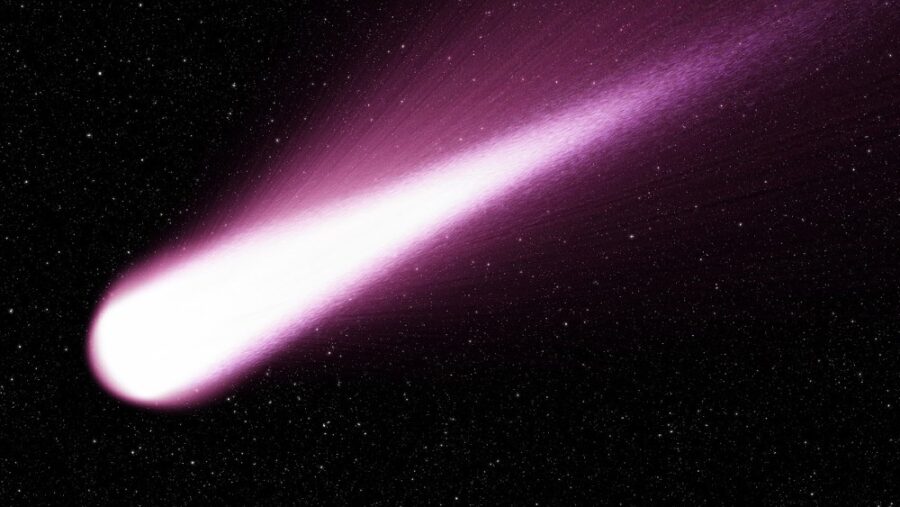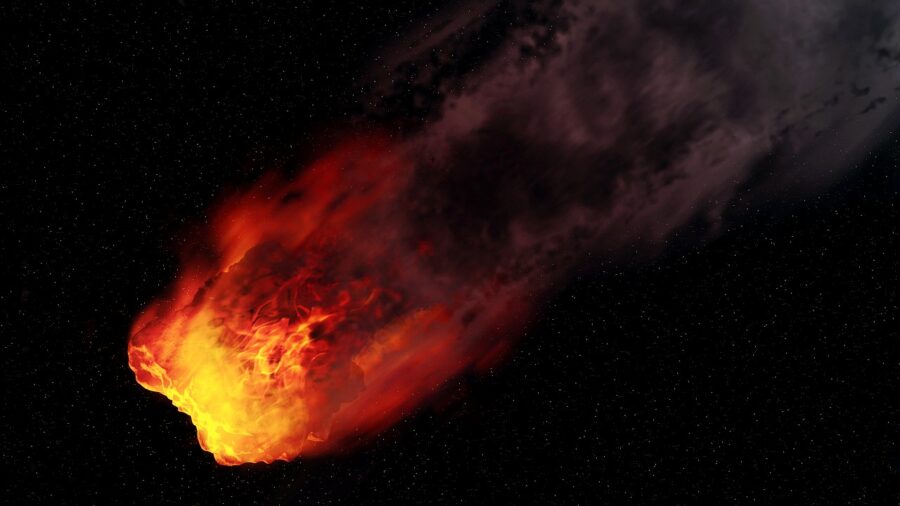Devil Comet Approaching Earth For First Time In Decades

For the first time in over 70 years, we will be able to witness the presence of a devil comet named 12P/Pons-Brooks, according to Science Alert. Despite its menacing nickname, Pons-Brooks isn’t going to collide with Earth, but rather make its way around the sun while being visible from our planet. One notable feature that makes this devil comet so special is its massive 12.4 mile diameter, which is much larger than your average comet that has a diameter of anywhere between .6 and 1.8 miles.
For the first time in nearly a century, this devil comet is about to pass by Earth.
The devil comet gets its unique name because of its two tails of gas and dust that have a striking resemblance to devil horns. Aside from its imposing size, and dual debris jets, 12P/Pons-Brooks burns so bright when it has an energy burst that we will be able to see it from Earth with binoculars, and possibly the naked eye if you live in an area that isn’t subjected to a ton of light pollution.
What makes the devil comet’s visibility so impressive is the fact that it’s further away from Earth than Earth is from the sun, meaning that it’s throwing off some serious heat.

It’s common for comets to have sudden bursts of energy when they get closer to a heat source like the sun, but in the case of this devil comet, it’s popping off quite frequently despite its current distance. When typical comets become more active, they tend to emit a spectacular amount of light for a brief period of time, and then return to their normal brightness, an occurrence that happens only a couple of times every five years or so.
There is a running theory as to why the devil comet, which is currently further off than Mars, is burning so brightly. The theory suggests that 12P/Pons-Brooks contains a substantial amount of ice that explodes with an intense burst of energy the first time it becomes exposed to heat from the sun.
The devil comet gets its unique name because of its two tails of gas and dust that have a striking resemblance to devil horns.
In other words, even though the devil comet is a considerable distance from the sun, whatever heat that is currently reaching it at its current location is enough to kick off this kind of chain reaction that we’re witnessing.
Witnessing the devil comet is a once-in-a-lifetime experience, and we strongly recommend you prepare for its peak brightness when it makes its way past Earth and toward the sun. With its current trajectory, scientists expect that we’ll be able to see the devil comet in all of its fiery glory in mid-April 2024, and if you’re lucky, you’ll be able to see it from your backyard without the aid of a telescope.
It’s common for comets to have sudden bursts of energy when they get closer to a heat source like the sun, but in the case of this devil comet, it’s popping off quite frequently despite its current distance.
If you’re living in the city and want to plan a star-gazing vacation, you might want to mark your calendar and commute to a more remote area where you’re not bombarded by city lights.
In many cases, our solar system is full of potential threats to our way of life, but in the case of the devil comet, no such worry exists. If you’re an amateur astronomer and want to see what all the buzz is about, then you’re not going to want to miss out on 12P/Pons-Brooks when it makes its rounds next spring.












